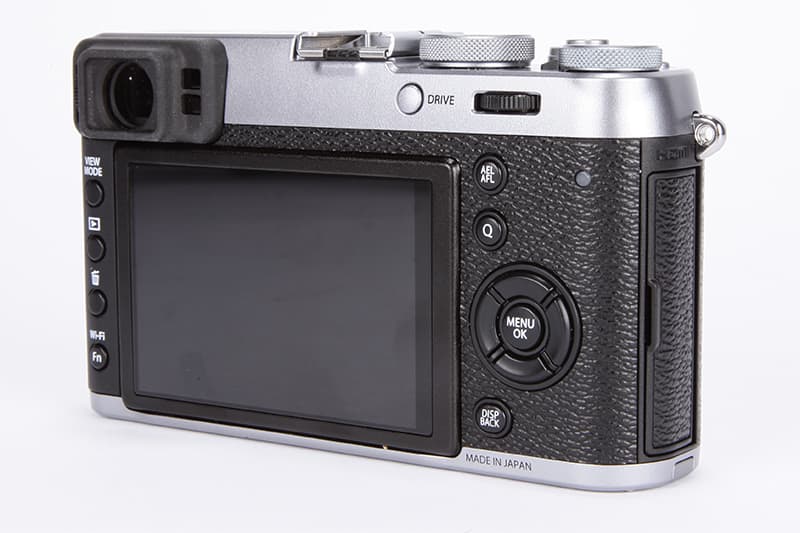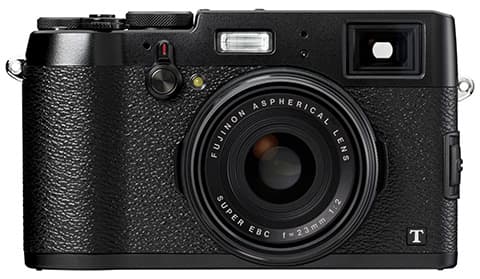Fujifilm has announced the fourth in the series of X100 cameras, the X100F (F stands for four, or fourth – get it?). The model has been popular ever since the first version a few years ago, with new model bringing a series of notable improvements. Here we’ll take a look at how the X100F compares with the last camera, the X100T.
Fuji X100F vs Fuji X100T: Sensor

Fuji is rolling out a new generation of sensors across a number of its latest models, and the X100 series is the latest to receive one. The X100F has a 24.3 X-Trans CMOS III sensor, which is APS-C sized. That compares with the 16.3 megapixel X-Trans CMOS II sensor – which was also APS-C sized.
Fuji X100F vs Fuji X100T: Lens

Sticking with a tried and tested lens, the X100F has the same 23mm f/2.0 fixed lens that that the X100T, X100S and X100 had. The focal length gives an equivalent of 35mm in full-frame terms, and it’s also possible to use conversion lenses to get a wider (28mm) focal length, and also a shorter one (50mm).
Fuji X100F vs Fuji X100T: Processor

The new front dial can be used for changing a variety of settings
Another specification that is filtering its way through the various Fuji releases, the X100F has the newest processor available in the shape of the X Processor Pro. This brings with it a range of improvements including a 0.5 second startup time, 0.2 second interval shooting, and 0.01 second shutter lag.
Fuji X100F vs Fuji X100T: Viewfinder

Both the X100F and the X100T use a hybrid viewfinder which offers both an optical viewfinder and an electronic viewfinder – you move between the two at the flick of a switch. The X100F’s finder sees a boost to 60fps inside the viewfinder for a smoother view.
Fuji X100F vs Fuji X100T: Autofocus

All of the rear controls are clustered for one-handed operation
Fuji is again rolling out its improved autofocusing across the range. The 49-point autofocus system of the X100T is improved to 91-points for the X100F. It also boasts a focus acquisition speed of just 0.08 seconds.
Fuji X100F vs Fuji X100T: ISO

The new sensor and processor combination means that the X100F can offer a native sensitivity range of 200 – 12800. That compares with the top native speed of ISO 6400 for the X100T. Both of the cameras have expanded settings which go down to ISO 100 and up to ISO 51200.
Fuji X100F vs Fuji X100T: Video

Unlike some of the other cameras in Fuji’s range, the X100F can’t shoot at 4K, instead you have the option to shoot at Full HD for up to 60fps – it’s fair to say that the camera is not designed to be targeted towards videographers, though.
Fuji X100F vs Fuji X100T: Design

The X100F’s backplate gains a joystick-type AF point controller
Although Fuji has kept roughly the same shape and size for the X100F as the X100T, there have been some small design changes which should make the camera easier to use. There is now an ISO dial and a focus lever, while the layout on the back of the camera has been overhauled to make it simpler to use when you’re shooting with the viewfinder and can’t see the buttons but still want to make changes.
Fuji X100F vs Fuji X100T: Film simulation

One of the most loved features of Fuji cameras is the film simulation modes. This allows you to shoot and have the look of classic film stock, such as Provia, Velvia or Astia. The X100T had a good range of simulation modes, but the X100F brings the ACROS simulation, which is great for black and white shots. There’s also a Grain Effect which can be added to film simulation modes for an extra old-fashioned look.
Fuji X100F vs Fuji X100T: Price

Among the accessories will be this matched leather case
As we’d expect, the new model comes with an increased price tag. You can pick up the X100F for around £1249, whereas the older X100T is available for around £900 – £1000 depending on where you find it. The older camera is still an excellent model, so it may be worth picking one of those up, especially as prices are likely to drop even further as the new model becomes more readily available. You do get a decent upgrade for your money though – with a high resolution, better processor and improved AF.
Read more:
Fujifilm X100F review: hands-on first look








